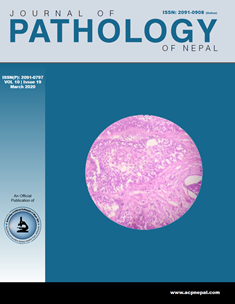Comparison between direct assay and popular equations for Low Density Lipoprotein-cholesterol estimation in Nepalese Population
DOI:
https://doi.org/10.3126/jpn.v10i1.27163Keywords:
Friedewald equation, Low density lipoprotein cholesterol, TriclycerideAbstract
Background: The aim of this study was to compare LDL-C estimations using various equations with directly measured LDL-C and to find the most accurate and reliable equation for measuring serum LDL-C at different triglycerides level.
Materials and Methods: In this study, we performed a retrospective analysis on the database of our Laboratory Information System to retrieve results of lipid profile in patients visiting Dhulikhel Hospital during the period of 6 months. A total of 1420 participants were classified into three groups according to triglyceride (TG) concentrations as follows: <150, 150–199 and >199 mg/dL. LDL-C was calculated using the Friedewald, Chen, Vujovic, Hattori, Anandaraja and modified Friedewald equations and compared with directly measured LDL-C concentration (enzymatic method on Biosystems, BA-400).
Results: In most of the instances, calculated LDL-C value was higher than the directly measured LDL-C values with negative mean difference with the exception of Hattori equation. The intraclass correlation coefficient (ICC) between the estimated and directly-measured LDL-C was higher with the Friedewald equation (ICC=0.917; 95% CI: 0.904-0.927) for all serum TG ranges compared with other equations. The reliability of all the equations was good with ICC being above 0.75 while that of the Friedewald equation was excellent in all the TG groups with ICC being above 0.9. Hattori equation was better in estimating LDL-C at normal TG range (ICC=0.927; 95% CI: 0.917-0.937) and borderline high TG (ICC= 0.933; 95% CI: 0.908-0.951).
Conclusion: Calculated LDL-C using appropriate equations can be an alternative cost-effective tool to measure LDL-C when the direct measurement cannot be afforded.
Downloads
Downloads
Published
How to Cite
Issue
Section
License
This license enables reusers to distribute, remix, adapt, and build upon the material in any medium or format, so long as attribution is given to the creator. The license allows for commercial use.




